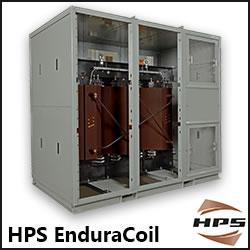Busting EV myths - Breaking down the biggest misconceptions surrounding EVs

Despite the expected shift towards electric and zero emission vehicles, there’s still a lot of controversy surrounding them. Are they really any cheaper to run? What’s their true environmental impact? In this article, Simone Bruckner, managing director of resistor manufacturer Cressall, breaks down the biggest myths surrounding electric vehicles (EVs).
With more than a quarter of a million new electric car registrations last year, uptake of EVs is definitely on the increase. More than one in five of us expect to be driving an EV within the next five-to-ten years. But there are still a lot of misconceptions surrounding EVs that keep potential buyers on the fence.
EV’s have insufficient range
Many potential buyers are concerned about EV range. Their concern is well-founded in part, with the Nissan Leaf’s lowest range sitting at just 73 miles back when it was launched in 2011.
Thankfully, EV technology has improved in leaps and bounds since then, and most EVs now sit comfortably within the 200-to-300-mile range mark. And these figures aren’t restricted to high-end models either, with models like Hyundai’s Kona and Kia’s e-Niro entering the market at around £35,000 and offering modest real-world ranges of around 250 miles according to Autocar.
99 per cent of car journeys in England are less than 100 miles, and the average length of a trip was less than ten miles pre-pandemic. Based on these numbers, EVs have a perfectly sufficient range for the vast majority of travel.
EVs aren’t environmentally friendly
A lot of the energy available through the Grid is produced through non-renewable sources. Yet, a report from the International Council on Clean Transportation found that the life-cycle emissions of EVs on the roads today are still almost 70 per cent lower than equivalent petrol vehicles.
And EVs powered entirely by renewable energy sources cut their emissions by a further eleven per cent. The same trend rings true for hydrogen fuel cell vehicles. Despite the vast majority of hydrogen being produced through environmentally damaging methods, fuel cell electric vehicle (FCEV) emissions are still 26 per cent lower than gasoline vehicles. This is even after factoring in the emissions from the additional infrastructure needed to support the complex production and transport of hydrogen fuel.
EVs cost more to refuel
Petrol and diesel prices spiked mid-2022, but the price of electricity has also drastically increased over the past six months, causing uncertainty for those who may have been considering the switch to an EV.
Research from the RAC found that in January 2023, the cost to refuel an EV using a public rapid charger was £92.69, only slightly lower than the cost to refuel an equivalent diesel at £95.68.
But consumers who are able to do the majority of their charging at home still enjoy considerable savings. These EV owners can still save between £38-50 compared to the cost of refuelling an equivalent petrol or diesel car.
Accelerating EV adoption
Though many of the questions surrounding EVs can be easily broken down, there’s still a clear disparity between consumer expectations and the current provision for EVs.
There must be more charging facilities made available on-street and at workplaces
for drivers to charge at, and these shouldn’t be charged at a premium if we want to give consumers the incentive to switch.
Automotive manufacturers should be looking to how they can design their vehicles to get the maximum range possible to alleviate consumer concerns and also help cut their fuel bills. One of the easiest ways to do this is by implementing regenerative braking. The electric motors that usually move the car forward can be reversed when the brakes are applied. By reversing the direction of the motors, the electricity can be put back into the battery rather than leaving it to be wasted. These small amounts of saved energy can add up to be significant over time.
But regenerative braking cannot act alone. If the vehicle’s battery is already full, the excess energy can cause an overload, leading to component damage or even failure. To prevent this from happening, a dynamic braking resistor (DBR) can be added to the system to safely dissipate the excess energy.
As well as safely dissipating excess energy, DBRs are also able to convert this energy for use elsewhere in the vehicle. If a DBR is water-cooled, this excess heat can be used to heat the vehicle’s cabin for a more enjoyable and efficient driving experience.
There’s still a long way to go before EVs make up the majority of vehicles on our roads. But the progress that the sector has made just within the last decade is undeniable. And by making clever use of the technology available, the EV market is set for future success.
Comments (0)
This post does not have any comments. Be the first to leave a comment below.
Featured Product

